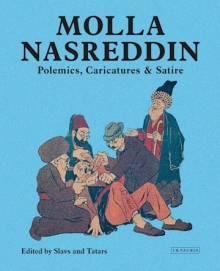
არამხატვრული ლიტერატურა
Georgia The Land Below the Caucasus
Georgia: The Land Below the Caucasus is a history of the Black Sea kingdom from its entry into Western consciousness during the last centuries BC to the Soviet occupation of 1921.
Situated between Europe and Asia, Georgia has been a stepchild of history. The nation, which adopted Christianity in 337, has survived Roman, Arab, Seljuk, Mongol, Timurid, Persian, Turkish and Russian invasions. Yet the heroic kings, generals, saints, martyrs, writers, poets, artists and craftsmen who have given Georgia a history rich in achievement and culture are little known. Georgia's historic cities, castles and cathedrals are rarely depicted and her towering mountain ranges, alpine valleys, and subtropical coast remain little known.
This book reweaves Georgia's colorful and complex history into a narrative that gives due weight to leading figures and key events but also touches upon the underlying society of humbler souls and less dramatic forces. The narrative recounts Georgia's great struggle--against all odds--for national and cultural independence. The nation's role as a force in early Christianity, its embassies to the courts of the Mongol khans, to the Russian tsars, the monarchs of Europe, and to the popes are all presented. Georgia's wars with Persia, Turkey and Russia - particularly the annexation of 1801 - are covered, as is the impact of the Crimean War and the First World War. The Georgian role as a Menshevik force in the Russian Revolution and the short-lived independent Democratic Republic of Georgia, 1918-21, are treated in lively detail. Events and action predominate, but without neglecting Georgia's rich legacy of scholarship, literature and poetry.
In its 500 pages, Georgia: The Land Below the Caucasus draws upon not only the few established but often hard-to-find accounts but also introduces many hitherto unknown or neglected sources. The book includes 20 specially commissioned full-page, full-color maps, 24 color plates, 6 dynastic/chronological charts and over 100 b&w illustrations. Notes, a full bibliography and an extensive index add to the book's value as a resource for scholars, general readers and visitors to and from Georgia.
About the Author:
Peter Skinner was born in Great Britain in 1938. After completing high school he served for two years in the Royal Navy, becoming an officer. He studied history at Oxford University, with summer trips to British Columba (Canada), where he worked on the Trans-Canadian Highway, and to Russia and the Crimea. After graduation he emigrated to the United States with his Polish wife, whom he had met on the Warsaw-Moscow express. In New York Peter Skinner has been a teacher in private schools and at the U.N., has worked in the computer industry, and was a fund-raising executive at a medical center. He subsequently worked as an editor of academic materials and as a book-reviewer. He is the author of World Trade Center, published shortly after the 9/11 terrorist attack, translated into 8 languages, and reissued in 2011. Peter Skinner traveled extensively in Georgia in 2007, 2008 and 2010, and remains very deeply interested in the country. He was the English-language editor for the Georgian Arts and Culture Center's 2008 and 2009 International Symposiums, which presented in total some 150 papers on historical-cultural topics from Antiquity to Modernism. He feels that for most audiences too little 'popular' narrative material is readily available on Georgia - the nation's history is all too often treated as a footnote to Persian, Turkish or Russian history. Through his Georgia: The Land below the Caucasus (to be published in December) Peter Skinner hopes to tell the nationユs story -- and direct readers to scattered and unduly neglected English-language sources. In particular, he hopes to encourage accessible translations of Georgian historical and literary works.











